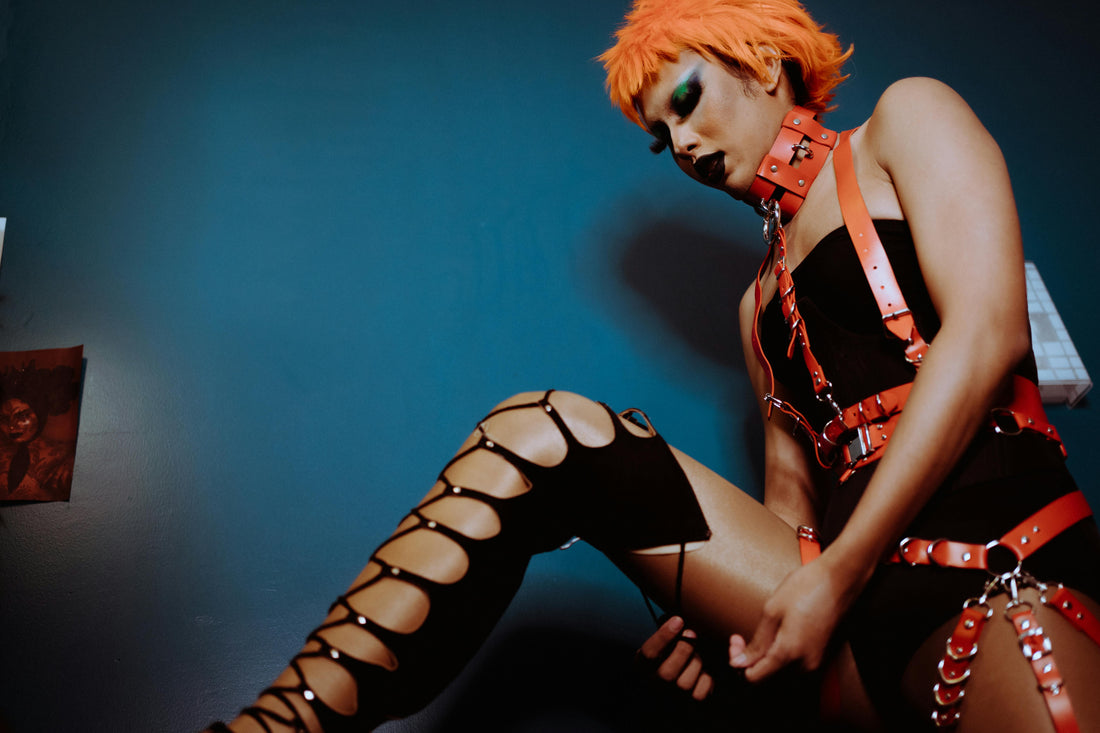
Restraints & Bondage – Lustfully bound
In the world of BDSM practices, bondage is one of the most sensual and at the same time most intimate experiences: whoever allows themselves to be tied up gives up control – and whoever ties up takes responsibility.
It's not just about knots, but about trust, presence, and body awareness . Done well, bondage can be not only arousing but also deeply bonding.
What does bondage mean?
"Bondage" is the English term for restraints. It involves restraining wrists, ankles, or entire body parts with ropes, cuffs, or other materials—sometimes to restrict movement, sometimes as an aesthetic ritual.
The goal is not only control, but often also a deep, almost meditative experience. Especially in Japanese Shibari, bondage becomes an art form.
What does bondage do?
- Increased body awareness : Those who cannot move perceive every touch more intensely.
- Psychological play : Loss of control can deepen trust and enable devotion.
- Visual stimuli : Bondage is often beautiful – especially with ropes that are artfully wrapped over skin.
What types of restraints are there?
- Hand and ankle cuffs (usually with Velcro or buckles): Quick to use, safe and ideal for beginners.
- Bondage ropes (made of cotton, hemp or nylon): For artistic knots and individual bondage play.
- Under-bed systems : Discreet, effective and easy to store.
- Spreader Bars (leg spreaders): For fixed body positions and access control.
- Tape or bondage foil : Only sticks to itself – good for quick, sexy fixations without knots.
Who is bondage suitable for?
- For couples who want to rediscover desire and trust each other more.
- For all who long for guidance or devotion.
- For curious people who want to experiment safely – with a gentle introduction.
Safety & Tips
- Never without safety agreements : Safe words/safe signals are mandatory.
- Never let it become numb or tingly : This is a warning sign – loosen the restraints immediately!
- Do not tie over joints or tendons , always prefer soft padded areas.
- Have a pair of scissors ready , preferably safety or belt scissors.
- Start slowly – for example, with handcuffs or a bed restraint set – and only later try complex bondage.
Which shackle suits you?
1. Are you curious but cautious?
Velcro cuffs or simple hand cuffs
“Quick to put on, safe and easy to remove – ideal for beginners.”
2. Do you want creative knots and rope art?
Bondage ropes made of cotton or jute
“For Shibari or decorative bondage – start with tutorials or workshops!”
3. You want to get started right away – without knotting?
Under-the-bed restraint system or spreader bars
“Fix yourself in seconds – safe, stable, and concealable for everyday use.”
Our tip:
Bondage is more than just bondage play—it's a conversation between two bodies. Take your time, approach it slowly—and always ensure trust, communication, and a good pair of scissors within reach.